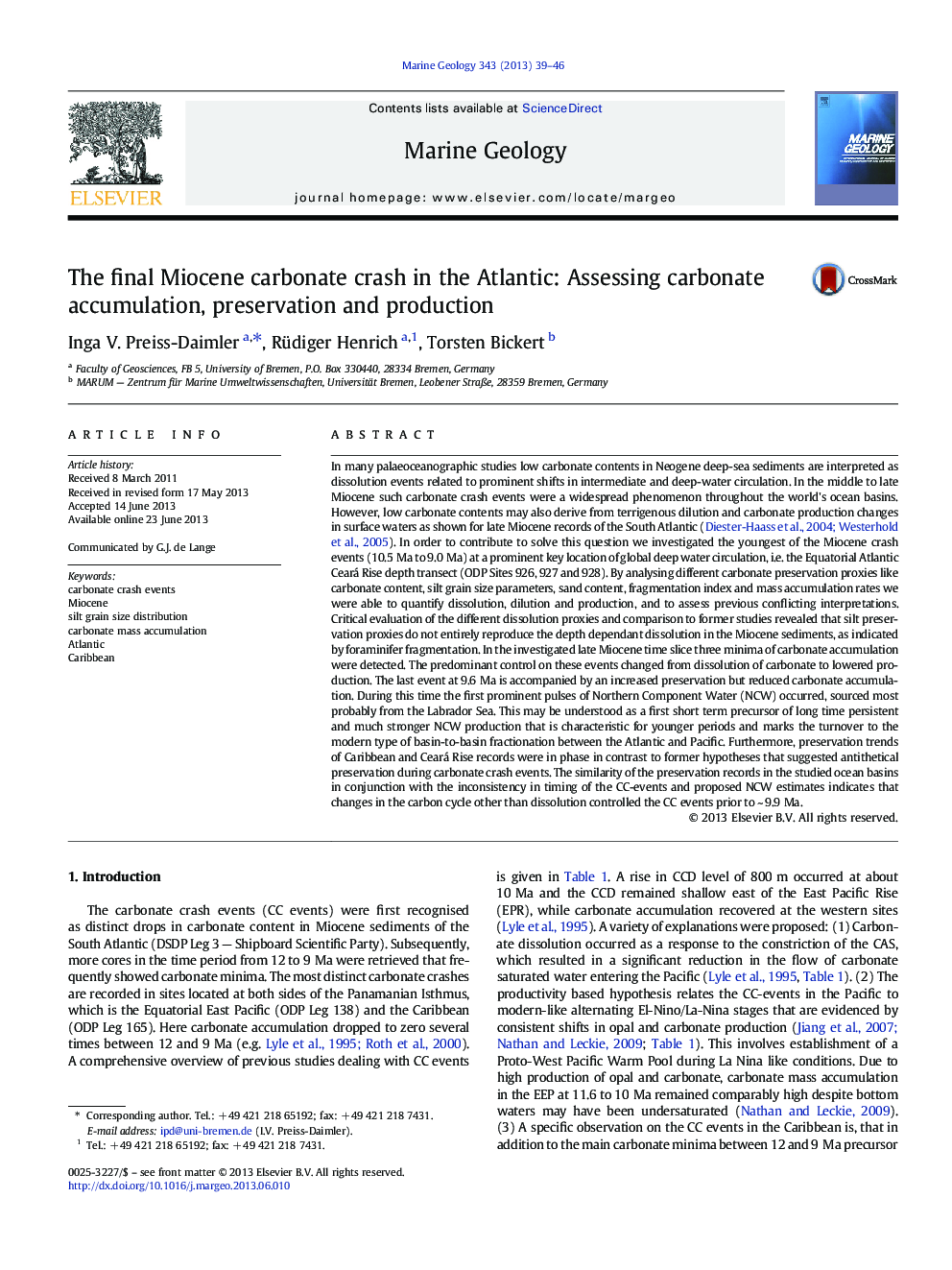| کد مقاله | کد نشریه | سال انتشار | مقاله انگلیسی | نسخه تمام متن |
|---|---|---|---|---|
| 6441714 | 1639109 | 2013 | 8 صفحه PDF | دانلود رایگان |
عنوان انگلیسی مقاله ISI
The final Miocene carbonate crash in the Atlantic: Assessing carbonate accumulation, preservation and production
ترجمه فارسی عنوان
سقوط ناپایدار کربنات میوسن در اقیانوس اطلس: ارزیابی انباشت، حفظ و تولید کربنات
دانلود مقاله + سفارش ترجمه
دانلود مقاله ISI انگلیسی
رایگان برای ایرانیان
کلمات کلیدی
رویدادهای تصادف کربناته، میوسن، توزیع اندازه دانه دانه، انباشت توده کربنات، اقیانوس اطلس کارائیب،
موضوعات مرتبط
مهندسی و علوم پایه
علوم زمین و سیارات
ژئوشیمی و پترولوژی
چکیده انگلیسی
In many palaeoceanographic studies low carbonate contents in Neogene deep-sea sediments are interpreted as dissolution events related to prominent shifts in intermediate and deep-water circulation. In the middle to late Miocene such carbonate crash events were a widespread phenomenon throughout the world's ocean basins. However, low carbonate contents may also derive from terrigenous dilution and carbonate production changes in surface waters as shown for late Miocene records of the South Atlantic (Diester-Haass et al., 2004; Westerhold et al., 2005). In order to contribute to solve this question we investigated the youngest of the Miocene crash events (10.5Â Ma to 9.0Â Ma) at a prominent key location of global deep water circulation, i.e. the Equatorial Atlantic Ceará Rise depth transect (ODP Sites 926, 927 and 928). By analysing different carbonate preservation proxies like carbonate content, silt grain size parameters, sand content, fragmentation index and mass accumulation rates we were able to quantify dissolution, dilution and production, and to assess previous conflicting interpretations. Critical evaluation of the different dissolution proxies and comparison to former studies revealed that silt preservation proxies do not entirely reproduce the depth dependant dissolution in the Miocene sediments, as indicated by foraminifer fragmentation. In the investigated late Miocene time slice three minima of carbonate accumulation were detected. The predominant control on these events changed from dissolution of carbonate to lowered production. The last event at 9.6Â Ma is accompanied by an increased preservation but reduced carbonate accumulation. During this time the first prominent pulses of Northern Component Water (NCW) occurred, sourced most probably from the Labrador Sea. This may be understood as a first short term precursor of long time persistent and much stronger NCW production that is characteristic for younger periods and marks the turnover to the modern type of basin-to-basin fractionation between the Atlantic and Pacific. Furthermore, preservation trends of Caribbean and Ceará Rise records were in phase in contrast to former hypotheses that suggested antithetical preservation during carbonate crash events. The similarity of the preservation records in the studied ocean basins in conjunction with the inconsistency in timing of the CC-events and proposed NCW estimates indicates that changes in the carbon cycle other than dissolution controlled the CC events prior to ~Â 9.9Â Ma.
ناشر
Database: Elsevier - ScienceDirect (ساینس دایرکت)
Journal: Marine Geology - Volume 343, 1 September 2013, Pages 39-46
Journal: Marine Geology - Volume 343, 1 September 2013, Pages 39-46
نویسندگان
Inga V. Preiss-Daimler, Rüdiger Henrich, Torsten Bickert,
